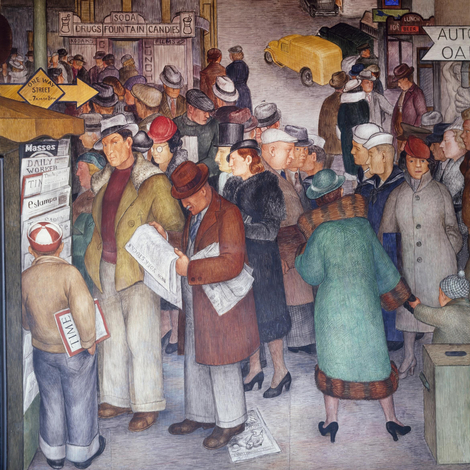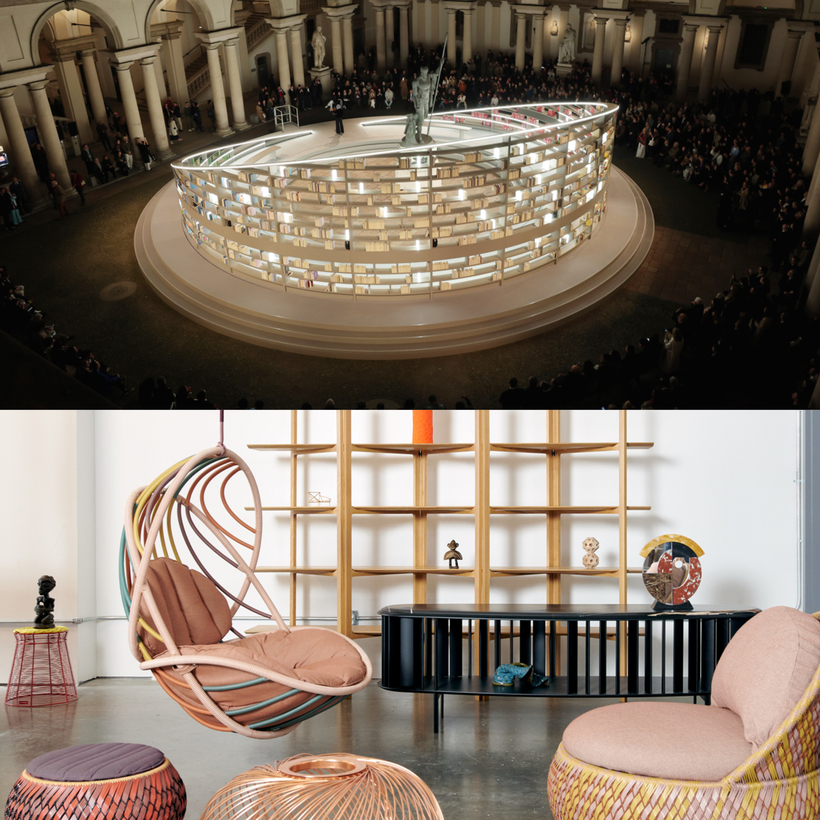Last week, a screenshot of an editor’s schedule for this year’s Salone del Mobile, in Milan, circulated on X. It listed cocktail parties hosted by Gucci, Etro, Fendi, and Hermès. One comment read, “Isn’t this a design fair?”
Since its inception, in 1961, the fair has been an annual pilgrimage for designers. Cutting-edge objects draw editors, architects, and other experts to opulent palazzos and warehouses, with deep-pocketed collectors following suit. This year, the Italian furniture retailer Artemest took over the frescoed 19th-century Palazzo Donizetti, while Alcova—a platform for emerging designers—occupied the postmodern designer Osvaldo Borsani’s 1945 home, Villa Borsani, the private 16th-century museum, Villa Bagatti Valsecchi, and the former SNIA factory.
It’s not new for fashion brands with houseware lines to participate, but over the past decade, the fashion crowd has started to edge into the industry insider’s fair.
This week, the luxury fashion retailer Value Retail hosted a cocktail event in the city center, Miu Miu set up a literary panel that examined books by feminist writers, and Mary Kate and Ashley Olsen’s fashion brand, The Row, debuted a collection of blankets, pillows, and quilts. At the T Magazine party, the star artist Misha Kahn installed inflatable sculptures around Villa Necchi Campiglio—a 1930s Milanese mansion featured in House of Gucci. The fashion writer Emilia Petrarca, the stylist Beverly Nguyen, and a crowd of well-dressed editors and designers were there.

“I went to Salone in 2015, and it was so different from what it is now,” William Cooper, the former creative director of the design studio Ash NYC, says. “Fashion has to insert itself in anything culturally relevant. It’s not necessarily negative; it’s just that the world has become more lifestyle-centric.”
That instinct has long driven luxury brands to align themselves with the fine-art world—Louis Vuitton underwrites retrospectives at the Fondation Louis Vuitton, in Paris; Prada has its own art foundation; and Saint Laurent recently launched a curatorial program.

But while fashion’s presence in fine art is well established, its move into design—historically more niche and less headline-worthy—signals a shift in the aesthete’s pecking order. Design is becoming the ultimate marker of cultural capital and taste—and the world is beginning to take notice.
Objects of Desire
The fashion and interior-design industries have overlapped for decades. In the 1930s, the first female president of the now defunct department store Bonwit Teller, Hortense Odlum, decided to elevate the shopping experience with an extensive exhibition of Art Deco furniture. She even enlisted Salvador Dalí to design the windows. The message was clear: back then, decorative objects were a backdrop for fashion. (Dalí later smashed the windows after customers complained they were too risqué.)
The newly opened Printemps, in Manhattan, follows a similar formula, with fashion framed by grand interiors. But this time the designer Laura Gonzalez drew more headlines than the clothes did. New York magazine’s coverage, for instance, focused almost entirely on the architecture. This raises a question: Who is the sidekick, and who is the star?

The answer is increasingly apparent. In the early 2000s, galleries such as Pierre Yovanovitch, Carpenters Workshop, and Galerie Kreo began marketing furniture as “functional art,” riffing on the Bauhaus ethos. Furniture was “highbrow,” and its creators were “artists.” Yet, compared with the highest echelons of fine art, it remained relatively within reach.
“Comprehending a fine art piece demands more knowledge and expertise,” Sebastian Burdon, a fine artist based in London, wrote on his Web site, Whatshisname. “Decorative art is simple and direct. You don’t need an art history degree to understand decorative art.”
The rise of social media in the 2010s—and fashion’s mass accessibility, as brands such as Zara, H&M, and Asos began churning out runway-inspired looks—created the perfect storm. In a world of algorithm-fed uniformity, not-so-stylish influencers, and knockoffs, the collectible-design world offered something else: a tight-knit, rarefied eco-system of tailor-made objects—more accessible than fine art, yet far more elusive than fashion.
The prices at its so-called entry level are already steep and climbing steadily. The French retailer the Invisible Collection, which offers made-to-order pieces by well-established designers, sells a Damien Langlois-Meurinne sofa for nearly $32,000, while a coffee table by Emmanuelle Simon goes for $25,000.

At auction, the numbers are even higher. A Louis XV Japanese lacquer-and-ebony commode—a top lot at Christie’s 2024 sale “L’Art du Luxe: Masterpieces of French Furniture”—went for $819,000. At Sotheby’s, François-Xavier Lalanne’s Herd of Elephants in the Trees fetched $11.6 million in November.
Fashion brands are taking note. Now in its eighth year, the Loewe Foundation Craft Prize awards $55,000 to a standout work by a contemporary artisan. And in September, Bottega Veneta presented a limited-edition collection of animal-shaped beanbag chairs during Milan Fashion Week.
“[Fashion] designers need to cultivate lifestyle and design elements to further define who their clients are,” the interior designer and founder of the clothing brand Tambutto, Lautaro Tambutto, says. “They want more context to their clothing. Design carries weight because it expands the DNA of a brand.”
Design fairs, other than Salone del Mobile, are drawing attention worldwide. At the European Fine Art Foundation fair in May, Leonardo DiCaprio rubbed shoulders with Prince Dimitri of Yugoslavia, Ashley Olsen, and the D.J. Mark Ronson. In December, Rihanna and A$AP Rocky were spotted perusing furniture at Design Miami. And the industry’s stars—such as interior designers Adam Charlap Hyman, Charlotte Rey, and Luke Edward Hall—though not well known globally, have become household names in select circles.These offerings have attracted a new breed of collector—not the studious, low-profile billionaire but people like Brad Pitt, Tom Ford, Chrissy Teigen, Roman Abramovich, and his ex-wife Dasha Zhukova.
Last month, I attended a celebration of the creative director Alexander May’s collaboration with textile company Nordic Knots, held at their SoHo showroom. Andre Mellone, who designed Lauren Santo Domingo’s Wyoming home, was there, along with the interior designer Patrick Mele and Tiwa Gallery’s founder, Alex Tieghi-Walker. There were no influencers looking for a free cocktail. Few photographs made it to social media, and, to an outsider, the event seemed designed to stay just out of view.
Isiah Magsino is a writer living in New York

